I have begun a new position working with a refugee resettlement agency. My duties will include my speaking with groups and churches about the refugee crisis and the need for volunteers to help in the resettlement process. There will be great compassion in these crowds. There will also be great fear and confusion as to the realities of the world surrounding refugees.
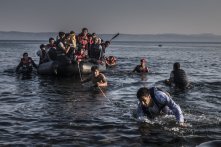 The worldwide refugee crisis did not begin with Syrians fleeing certain death in small boats trying to find a safe shore. It did not begin with the pictures of children found dead on foreign beaches. There have been vast movements of endangered people around the world for a long time.
The worldwide refugee crisis did not begin with Syrians fleeing certain death in small boats trying to find a safe shore. It did not begin with the pictures of children found dead on foreign beaches. There have been vast movements of endangered people around the world for a long time.
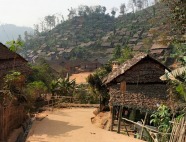 They are fleeing persecution and fearing for their lives often for no better reason than the language they speak, the faith they hold in their heart, location where their parents were born or the shade of their skin.
They are fleeing persecution and fearing for their lives often for no better reason than the language they speak, the faith they hold in their heart, location where their parents were born or the shade of their skin.
This has been going on for generations. Perhaps as long as mankind has visited cruelty and intolerance upon itself.
The current dilemma is the difficulty we have dividing the needs of our fear of terrorists with the needs of others fleeing from fears of their own. We fear what may happen again. They fear what will happen, and continue to happen unless they somehow escape. “But what if there are terrorists hiding among them?” we cry out in our fear. To help answer that and hopefully quell that fear long enough for compassion to rise up I put this here.
FYI.
I hope it helps clear the smoke and dust from your eyes.
Refugee Entry Process into the United States
The process for determining if any risk is involved in allowing a refugee or refugee family into the U.S. is broad and deeply layered. Many agencies, both foreign and domestic, are involved. With layers of redundancies as well as ongoing review and updates to more current intelligence, a process is enacted that is the most stringent and comprehensive of any applied to anyone entering this country. If at any time any element of risk is discovered the case is halted and entry denied. If at the end of any stage there is any doubt at all the case is halted and entry denied. Of all the refugees around the world (at least 16 million by conservative counts) only those who have a strong case for refugee status make the move to another country for resettlement. The number represents less than 1% of the total world refugee population.

May 24, 2012 – Mae Sot, Tak Province, Thailand – Moms stand with their new born babies to register them at the Birth Registration Office of UNHCR inside the Mae La refugee camp in Mae Sot near the Thai-Myanmar border on May 24, 2012. More than 140,000 refugees have been living in nine refugee camps scattered along the border in Thailand after the minority ethnic group fled their country in 1995 following a major offensive by the Myanmar government army against the Karen National Union. Photo Credit: UN Photo/Kibae Park
The U.N. Refugee agency, UNHCR, begins the vetting process with the reception of applications from the refugees. The UNHRC will collect identifying documents and perform initial assessments by collecting names, addresses of origin, birth day, place of birth, etc. They also begin the collection process of ‘biometrics’ which may include iris scans. Initial interviews are conducted by the UNHCR to confirm refugee status and the need for resettlement after which the information initially collected is rechecked. It is from this point that only strong applicants move forward. The number at this point is already less than 1% of the global refugee population.
The application is transmitted to the next layer of vetting: The Resettlement Support Center (RSC) which is a federally funded program. The RSC collects the identifying documents and create an applicant file. The compiled information is used to conduct the biographical security checks.
U.S. security agencies begin their involvement at this point. The applicant is screened by agencies that include The National Counter-terrorism Center/Intelligence Community, the FBI, Department of Homeland Security (DHS) and the State Department. They inspect the applicant’s information and background for any indication that the individual is a security risk, any connections with known elements that are determined to be risks as well as any outstanding warrants or immigration/criminal violations.
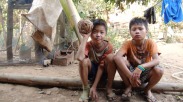 The DHS will conduct enhanced reviews of Syrian cases which may be referred to United States Citizenship and Immigration Services (USCIS) Fraud Detection and the National Security Directorate for review. This is done to confirm the applicant’s eligibility and credibility.
The DHS will conduct enhanced reviews of Syrian cases which may be referred to United States Citizenship and Immigration Services (USCIS) Fraud Detection and the National Security Directorate for review. This is done to confirm the applicant’s eligibility and credibility.
The DHS and USCIS will conduct interviews using Officers specially trained to conduct this part of the process. Fingerprints are collected and submitted for comparison to the FBI’s biometric database, The DHS’s biometric database (which contains watch list information and previous immigration encounters in the U.S. and overseas) and the U.S. Department of Defense biometric database (which includes fingerprint records captured in Iraq and other locations). Should the fingerprint results or any new information raise any questions the applicant will be re-interviewed. Should any new biographic information result additional security checks on the information are conducted. A hold may be placed on the case while further investigation and research are conducted.
If any security concerns arise the application ends at this point. Otherwise the process continues.
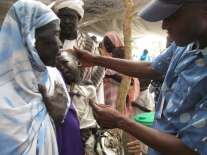 The need for medical screening is now determined and should the refugee applicant have medical conditions that disqualify admission into the U.S. the case is denied due to medical reasons. Regardless, should the refugee be in need of medical treatment (such as for tuberculosis) treatment will be provided.
The need for medical screening is now determined and should the refugee applicant have medical conditions that disqualify admission into the U.S. the case is denied due to medical reasons. Regardless, should the refugee be in need of medical treatment (such as for tuberculosis) treatment will be provided.
The refugee applicant will at this point attend and complete cultural orientation classes while a assessment by a U.S.-based, non-governmental organization determines the best resettlement location for the candidate(s). Preference may be given to any location where there are family ties or geographic locations that would better suit a candidate due to health conditions (such as asthma).
After a location is chosen the International Organization for Migration will book travel to the U.S.. The travel expense is paid for by the United States with an interest-free loan that the refugee is required to repay within two years. The screening process is still not over though. Prior to entry in the United States the applicants are subject to screening from U.S. Customs and Border Protections’s National Targeting Center-Passenger as well as the Transportation Security Administration’s Secure Flight Program. Even this far along this can be an endpoint for some applicants. Should any flags be raised entry into the U.S. can be denied. Refugee applicants that clear this phase continue the process.
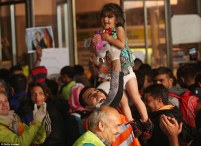 After arrival in the U.S. the applicants are received by a resettlement agency which provides further cultural orientation, ESL training, housing and employment assistance as well as other vital services to help the refugee adjust and prosper in their new home country. The new arrival will be required to apply for Permanent Resident status (Green Card) within a year of entering the U.S.. This will trigger yet another set of security procedures with the U.S. government.
After arrival in the U.S. the applicants are received by a resettlement agency which provides further cultural orientation, ESL training, housing and employment assistance as well as other vital services to help the refugee adjust and prosper in their new home country. The new arrival will be required to apply for Permanent Resident status (Green Card) within a year of entering the U.S.. This will trigger yet another set of security procedures with the U.S. government.
After a process of screening that involves at least 11 different national and international agencies and which can sometimes take three years to complete the refugee is at last in a country of safe refuge that allows them to begin a new life where hope can replace the pervasive fear and persecution they have endured for so long.